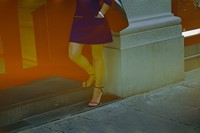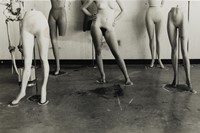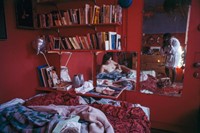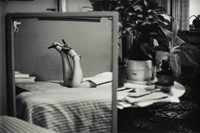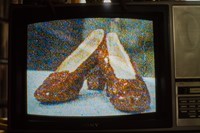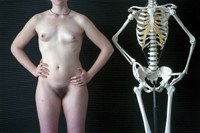A new exhibition in New York displays never-before-seen images by Barkley L Hendricks, a renowned American painter whose photography was lesser known – until now
The late Barkley L Hendricks’ portraits blaze with cool. His subjects talk back at you with flair and brazenness. The gaze behind them is wry, playful, sharp. Hendricks is perhaps best known as a master of painting – as evidenced in his use of oil and gold leaf in Lawdy Mama (1969) and the vibrant figurative abstraction of Sir Charles, Alias Willie Harris (1972). But Hendricks captured electrifying images without a paintbrush, too.
“We always knew Barkley was a photographer,” says Elisabeth Sann, who curated the new exhibition Myself When I Am Real of Hendricks’ photographs at Jack Shainman Gallery in New York, alongside Hendricks’ widow Susan and Jack Shainman. “It was hard to ignore it; he went everywhere with a camera around his neck, ready to snap photos. He was always taking pictures. You’d be in a meeting and something would catch his eye and he’d just lift his camera from his neck and start shooting, while still carrying on the conversation.”
The collection of 60 photographs in the exhibition is a combination of never-before-seen images from the archive, as well as a number of Hendricks’ vintage prints, some of which he tinted himself by hand. The result – “mostly things Barkley saw on a given day” – offers riveting insight into Hendricks’ preoccupations and obsessions, revealing a perspective that was roving, keen and unapologetic. There are photographs of people taken on the street, mirror self-portraits, and tongue-in-cheek figurative studies, including one in which the torso of a nude model is juxtaposed with a skeleton posed in the same manner.
“I think he always wanted to show these other parts of his work but he knew that everyone was focused on the portrait painting,” Sann explains. “I don’t think he pushed as hard as he should have or maybe we weren’t in the space to listen. It wasn’t until he passed away in 2017 that we really took a hard look at all the different work he was creating and saw that really the public only knows the portraits, and not all of them at that. It’s been a six-year-long discovery diving into this media and seeing what he was making, and all the time it was contemporaneous with his paintings.”
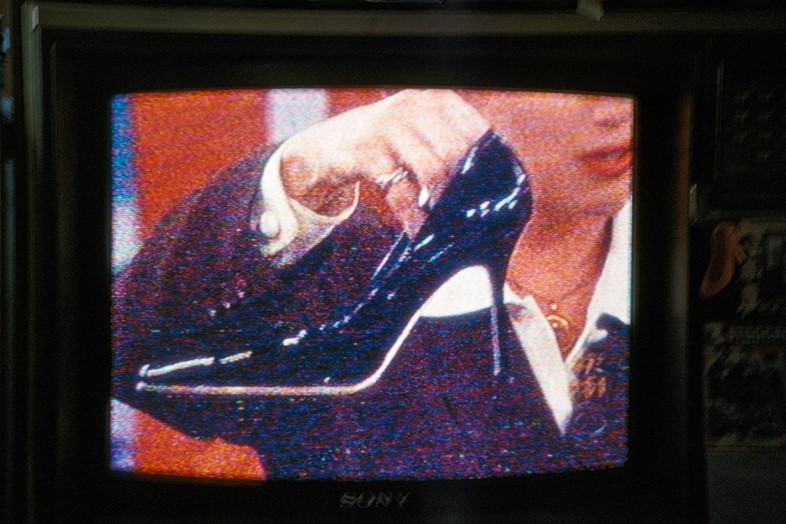
Indeed, many of the images in the exhibition feel like blueprints for Hendricks’ paintings, and those familiar with his work will recognise certain motifs – a deconstruction of the human body and a formal interest in heeled shoes, to name a few. “We saw some patterns emerging, like the way Barkley really challenges perception, both compositionally and conceptually,” explains Sann. “A lot of photos taken through mirrors like the Dutch masters Vermeer or Parmigianino – masters of the 17th century – but in a very contemporary way.” In Hendricks’ mirror portraits, one also finds his abiding interest in the public vs. the private self. “You can see that in both his painting and in his photographs, he was [the] most experimental with himself as the model,” Sann says.
Stylistically, Hendricks’ photographs feel looser than his paintings, as if he approached the medium with less rigidity. “Painting was a challenge because he could edit what he wanted to reveal and what he didn’t,” explains Sann. “These photographs are pretty simple, compositionally, but you can see he’s allowing more of his world, perspective, sense of humour [and] thoughts behind the work to show.”
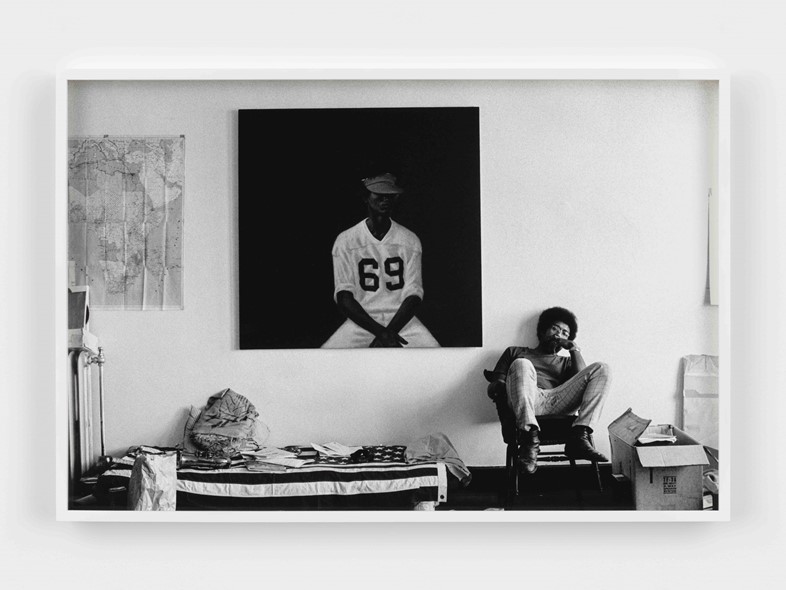
Nearly half of the photographs in the show are of television stills taken in a local New London bar called The Dutch Tavern, a series that features many images that remain seared in our collective memory. “He shot it mostly over the course of the 1980s and 90s,” Sann elaborates. “It’s like every moment in pop culture history. He even has the moment when Mike Tyson bites Evander Holyfield’s ear off and the OJ Simpson trial. But on the lighter side, you have The Brady Bunch, All in the Family, things that have that kind of warm, American collective memory,” says Sann. “We wanted to create this kind of repetition, to give that feeling of this media oversaturation, like flipping the channels.” Anita Hill, Marilyn Monroe, Denzel Washington as Malcolm X, Big Bird – the mythologies, swirling madness and desperate longings of American life are all there.
Hendricks’ gallery took a few liberties and decided to title the exhibition after the Charles Mingus song Myself When I Am Real, although Hendricks never mentioned or wrote about it specifically. In thinking about the exhibition’s title and what it says about Hendricks’ practice at large, Raymond Saunders’ essay Black is a Colour came to mind, in which Saunders troubles the question of “Black art.” In it, Saunders writes, “[the artist] has to enter into the total experience of himself and his vision, what transcends the cramped boundaries of any stereotype – angry or otherwise.” Escaping the cramped is what is cool, the indelible realness that shines from Hendricks’ photographs.
Barkley L Hendricks: Myself When I Am Real is on show at Jack Shainman Gallery in New York until 17 June 2023.

